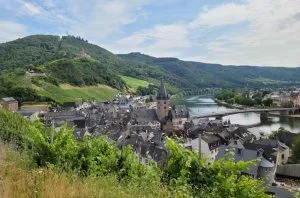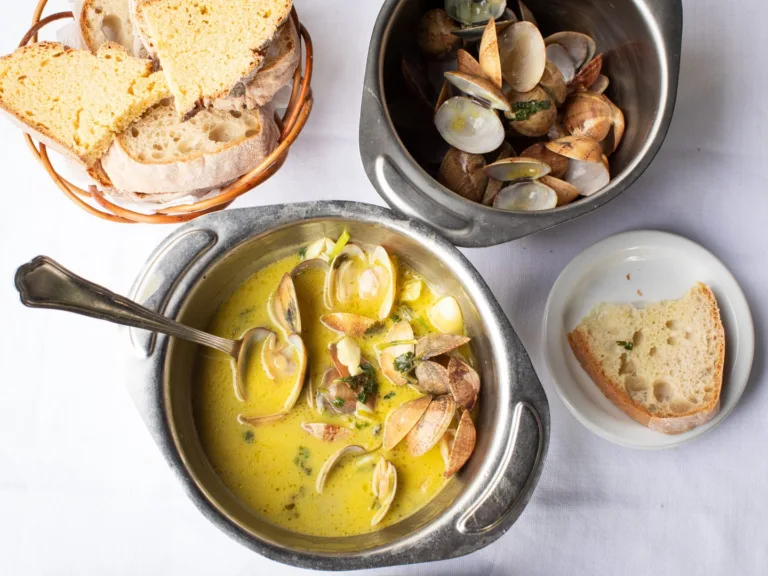Bernkastel from the vineyards above.
The Mosel River gets its start in the lower elevation Vosges mountain range in eastern France, flowing through Luxembourg before making its way to western Germany. It joins with the Rhine in Koblenz, but its middle section, known in German as the Mittelmosel, is where a series of conditions come together to produce some of the greatest white wines in the world.
Between the riverbanks and the steep slate slopes that jut skyward at seemingly impossible gradients, villages of varying degrees of bucolic charm dot the Mosel Valley. These sites offer wine lovers travelling the region plenty of places to stay, eat and explore one of Germany’s true treasures.
The history of wine cultivation in the Mosel Valley goes back to Roman times. Vineyards were planted along the river to provide wine for troops stationed in the region rather than transporting it from further afield. While the Mosel Valley represents Riesling royalty, for many Germans, the region stands out as a vacation spot for camping, cycling and gourmet dining in the valley’s quaint and quiet villages.

Looking across the Mosel from Wehlen. Credit: Clive Pursehouse
A river runs through it
The Mosel (along with the Douro Valley) may be one of the only wine regions in the world where you can see all of the valley’s top vineyard sites from the water. One of the best ways to get a real sense of the Mosel’s Grosse Lagen (equivalent to







